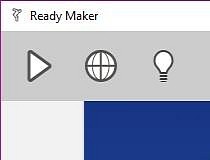
Figure 3 demonstrates a sample buying process prospective customers would go through in exploring Zendesk’s Support product offerings.Īnother key area assessed during the wireframe stage is technical feasibility. As an example, Zendesk 3 utilizes a mix of different packaging options to allow customers to configure a package that fits their needs. Products are broken down to features that have a distinct commercial value and then assessed by a variety of criteria, such as perceived value, relevance of the use cases and level of differentiation.
#READY MAKER COMERCIAL SOFTWARE#
In the same EY global study mentioned earlier, proper bundling of products emerges as a major challenge, with 82% of software companies citing developing clear/more compelling value propositions (e.g., bundles) as a high or medium priority for the internal sales and marketing process changes they are seeking to improve.Īddressing this concern effectively requires deep product, customer and competitive understanding.

Once a set of viable packaging options has been identified, the wireframe stage applies a methodical approach to define the bundle parameters and design choices. This stage also helps companies eliminate options that do not seem to work and instead focus on the ones with strong market potential.įigure 2 shows a range of design options that could be examined during the sketch phase. It adopted an à la carte menu of options aimed at serving its vast customer base more effectively.īy sketching out the options iteratively, companies can continuously review the maturity of their offerings and their alignment with customers’ buying needs. Even established software companies continue to go back to the drawing board and re-sketch their designs.įor example, in 2019, a few months after rolling out a new licensing plan for Dynamics 365, Microsoft 2 completely changed the plan to meet specific customer needs and drive a stronger discussion on the value of the software. While there are numerous packaging strategies that SaaS companies can take, our experience shows that the most successful ones consistently undertake the sketch stage iteratively to scan through the art of the possible. To embed this alignment, the sketch stage involves a high-level scan of the factors that directly affect a product package, including strategic objectives, industry trends, use cases, key customer segments and product maturity.

For SaaS providers, it’s vital that packaging design aligns with the overall business and product strategy.


 0 kommentar(er)
0 kommentar(er)
